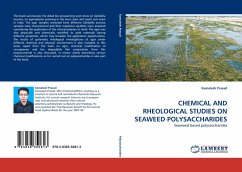The book titled "Rheological Characteristics of Human Saliva" is structured into four chapters. It examines how saliva behaves under mechanical forces, focusing on its flow and deformation properties. Saliva plays an essential role in mastication, swallowing, speech, and digestion, and its rheological behavior is key to these functions. As a pseudoplastic, non-Newtonian fluid, saliva becomes less viscous with increased shear rate. This allows it to flow more easily during activities like chewing or speaking, while remaining more viscous at rest to protect and hydrate the oral mucosa. Its viscosity varies depending on the type of salivary gland-parotid saliva is more watery, while submandibular and sublingual secretions are thicker and more mucinous. Stimulation reduces viscosity, and factors such as hydration, health, stress, and diet also influence its rheological properties.
Bitte wählen Sie Ihr Anliegen aus.
Rechnungen
Retourenschein anfordern
Bestellstatus
Storno








